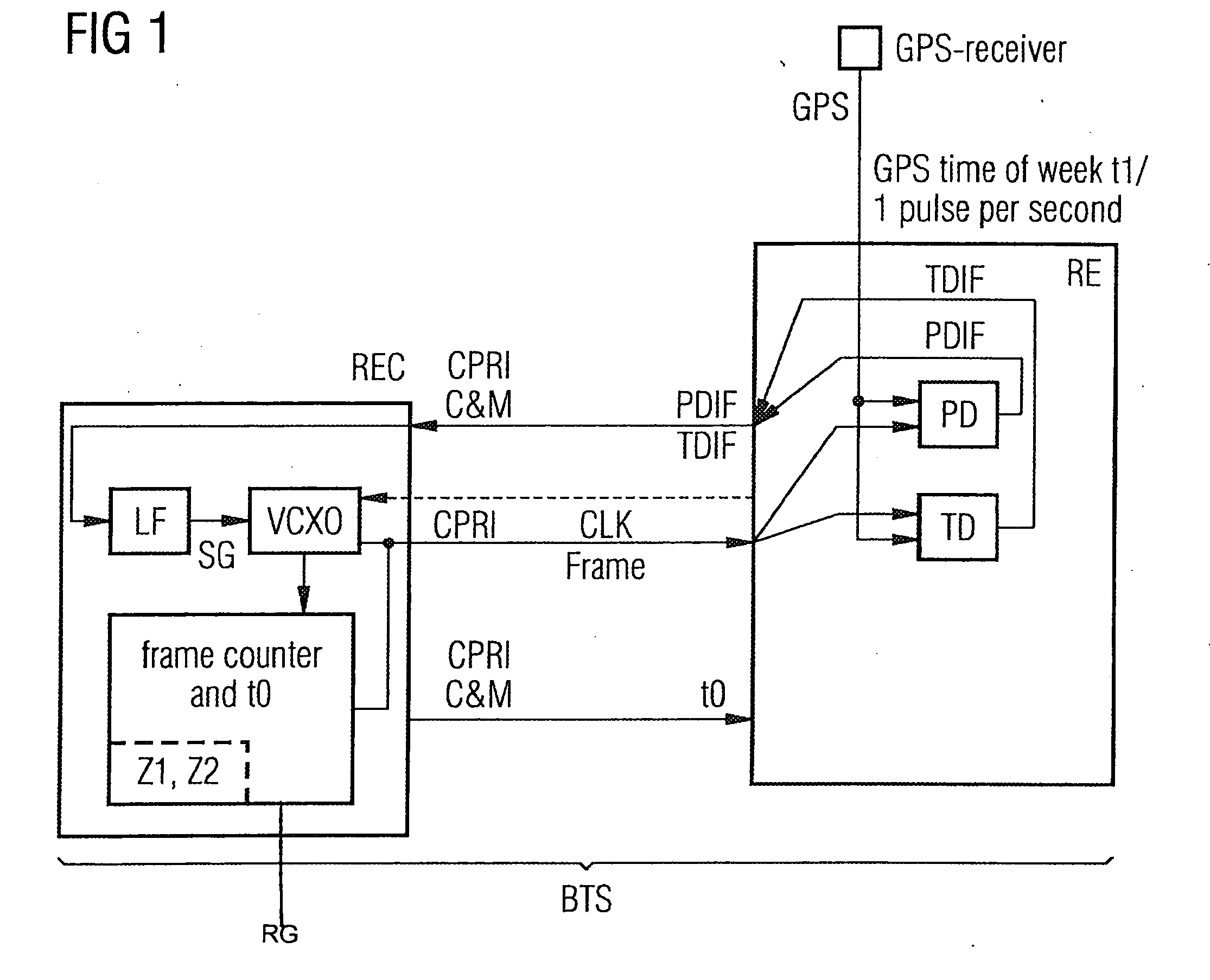Method for Synchronization of Assemblies in a Base Station
a technology of assembly and base station, applied in the direction of substation equipment, time-division multiplex, electrical equipment, etc., can solve the problems of high cost caused by line length and additional outlay on line installation cost, and achieve the effect of reducing the cost of implementation, reducing the cost of synchronization, and high accuracy of time synchronization
- Summary
- Abstract
- Description
- Claims
- Application Information
AI Technical Summary
Benefits of technology
Problems solved by technology
Method used
Image
Examples
Embodiment Construction
[0015]Reference will now be made in detail to the preferred embodiments of the present invention, examples of which are illustrated in the accompanying drawings, wherein like reference numerals refer to like elements throughout.
[0016]FIG. 1 shows a first exemplary embodiment of the method proposed by the inventors.
[0017]A first assembly REC and a second assembly RE in a base station BTS are preferably interconnected via a network CPRI. The CPRI network enables synchronous transmission of signals with a predictable propagation time between the assemblies RE and REC.
[0018]The first assembly REC includes an oscillator VCXO and a frame generator RG, a local clock signal CLK being formed with the aid of the oscillator VCXO, and a Frame being formed with the aid of the frame generator RG.
[0019]The local clock signal CLK and the Frame are transmitted to a second assembly RE by using synchronous transmission with a predictable propagation time.
[0020]A layer1 protocol of the CPRI network is ...
PUM
 Login to View More
Login to View More Abstract
Description
Claims
Application Information
 Login to View More
Login to View More - R&D
- Intellectual Property
- Life Sciences
- Materials
- Tech Scout
- Unparalleled Data Quality
- Higher Quality Content
- 60% Fewer Hallucinations
Browse by: Latest US Patents, China's latest patents, Technical Efficacy Thesaurus, Application Domain, Technology Topic, Popular Technical Reports.
© 2025 PatSnap. All rights reserved.Legal|Privacy policy|Modern Slavery Act Transparency Statement|Sitemap|About US| Contact US: help@patsnap.com



